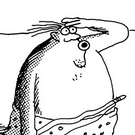Will R32 Gtr Front Hubs Fit R32 Gtst?
Announcements
-
Similar Content
-
Latest Posts
-
By soviet_merlin · Posted
Half anticipating the next question then: I have two magnets stuck in my oil pan. What should I do? -
By joshuaho96 · Posted
If it's magnetic what is stopping you from using a magnet on a thin wire from fishing it out? -
Those 2 solenoids in that assembly I mention, are the PWM solenoids for torque converter lock-up clutch & EPC (line pressure control) ~ when most folks hear of 'solenoid failure', the tendency is to think electrical failure...but fact of the matter is, especially wrt the EPC solenoid (which is moving/running all the time), you can have an electrically 'good' solenoid, that's absolutely broken/worn out mechanically inside...ie; valve plunger return spring rubbing against spring retainer plate, lowering preload pressure.. ...and the solenoid armature extension limit spring wafer with bad wear/broken off petals... ...and if there's ever been any metal flying about, damage to the valve plunger end itself... ...the stuff one never really sees, unless you go the whole 10yards trying to answer the question "why is my line pressure screwy, but TCU isn't flagging any EPC solenoid fault?"...and carefully dissect the solenoid. Worst (and most probable) scenario is when the plate spring petals break off, they get held by the magnetic flux, get mashed up by the armature into little bits, which end up in the space between the armature & shading core bore, and things get stuck or randomly jam up, and your line pressure goes flat and doesn't change...and the TCU never sees it, as it doesn't actively monitor LP... ..then it gets into insidious land, if you end up with lower than expected line pressure...lets say high clutch..and the lower pressure causes it to slip ~ when I say 'slip', think say 2000rpm on the drive plates, and 1800rpm on the driven plates, because the slip is making them under-rotate by 200rpm ; you get all the usual nasties like heat and band/clutch wear, but even if it's only 20rpm slip the same thing happens...and... you'll hardly ever pick this up driving the thing with the torque converter active as it effectively masks these sorts of slippages that are line pressure related ...(the newer TCUs can detect clutch slip rate)...just FYI as it were...
-
There's nothing that some paddle pop sticks and extra cable ties can't fix.






Recommended Posts
Create an account or sign in to comment
You need to be a member in order to leave a comment
Create an account
Sign up for a new account in our community. It's easy!
Register a new accountSign in
Already have an account? Sign in here.
Sign In Now